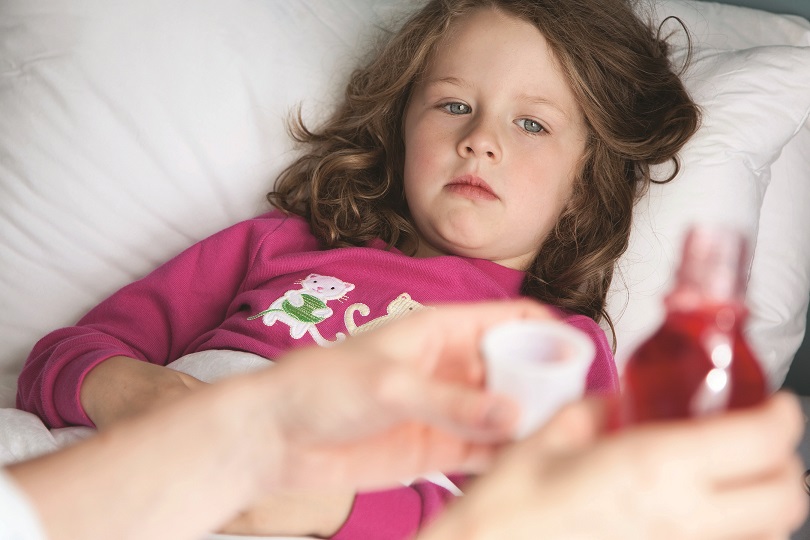Your nose is stuffy, your throat is scratchy and your head is pounding. Is it a cold or the seasonal flu? Symptoms can overlap, but it's important to recognize that, especially in vulnerable populations like children and seniors, the flu can be dangerous. The only way to truly know if you have come down with the flu or merely a cold is to see your doctor, but here are some basic differences between the cold and flu, according to Healthline.

It’s called “common” for a reason. It’s a seasonal respiratory infection that’s the leading cause of doctor’s office visits and missed work or school days each year. According to the National Institute of Allergy and Infectious Diseases, approximately 22 million school days are lost each year in the U.S. due to the common cold. Unlike the flu, cold symptoms are generally mild and in most cases do not lead to any serious health complications. According to Mayo Clinic, more than 100 different viruses can cause the common cold. However, the rhinovirus is most often the one that makes people sneeze and sniffle, and it’s highly contagious. When someone who’s sick sneezes or coughs, he or she sends virus-filled droplets flying through the air. You can get sick if you touch a surface that has recently been handled by a cold-infected person, and then touch your nose, mouth or eyes. Symptoms of the common cold include runny or stuffy nose, sore throat, sneezing, slight fever (more common in children), cough, headache or body aches and mild tiredness. Colds are contagious during the first three days, so stay home and rest up. Because this is a viral infection, antibiotics are not effective in treating a cold. Drink plenty of fluids to avoid dehydration. It’s very hard to stop the common cold, but there are ways to prevent it. The best prevention is avoidance. Stay away from anyone who looks sick, and don’t share utensils or any other personal items. Also, practice good hygiene. Wash your hands often with warm water and soap to get rid of any germs you might have picked up during the day, or use an alcohol-based hand sanitizer. When they’re not freshly washed, keep your hands away from your nose, eyes and mouth. Adopt healthy habits, such as getting plenty of sleep, eating lots of fruits and vegetables, exercising and managing stress to keep cold germs at bay.
The common cold

It’s called “common” for a reason. It’s a seasonal respiratory infection that’s the leading cause of doctor’s office visits and missed work or school days each year. According to the National Institute of Allergy and Infectious Diseases, approximately 22 million school days are lost each year in the U.S. due to the common cold. Unlike the flu, cold symptoms are generally mild and in most cases do not lead to any serious health complications. According to Mayo Clinic, more than 100 different viruses can cause the common cold. However, the rhinovirus is most often the one that makes people sneeze and sniffle, and it’s highly contagious. When someone who’s sick sneezes or coughs, he or she sends virus-filled droplets flying through the air. You can get sick if you touch a surface that has recently been handled by a cold-infected person, and then touch your nose, mouth or eyes. Symptoms of the common cold include runny or stuffy nose, sore throat, sneezing, slight fever (more common in children), cough, headache or body aches and mild tiredness. Colds are contagious during the first three days, so stay home and rest up. Because this is a viral infection, antibiotics are not effective in treating a cold. Drink plenty of fluids to avoid dehydration. It’s very hard to stop the common cold, but there are ways to prevent it. The best prevention is avoidance. Stay away from anyone who looks sick, and don’t share utensils or any other personal items. Also, practice good hygiene. Wash your hands often with warm water and soap to get rid of any germs you might have picked up during the day, or use an alcohol-based hand sanitizer. When they’re not freshly washed, keep your hands away from your nose, eyes and mouth. Adopt healthy habits, such as getting plenty of sleep, eating lots of fruits and vegetables, exercising and managing stress to keep cold germs at bay.
Seasonal flu
Unlike the common cold, the flu is a respiratory illness that can develop into a more serious condition such as pneumonia. This is especially true for young children, older adults, pregnant women and people with health conditions such as asthma or heart disease (CDC, 2011). The flu is generally seasonal, while the cold can hit at any time of the year. Flu season usually runs from fall to spring, peaking during the winter months. During flu season, you can catch it the same way you’d catch a cold: by coming in contact with droplets spread by an infected person. The flu is caused by the influenza A and B viruses. Active strains of influenza virus vary from year to year. That’s why a new flu vaccine is released each year. Flu symptoms, which can be very similar to cold symptoms, include:- Dry, hacking cough
- Fever or chills
- Sore throat
- Muscle or body aches, headache
- Stuffy and runny nose
- Profound fatigue (may last 2 to 3 weeks)
When should I call the doctor?
According to the University of California, San Francisco Medical Center, those at risk for serious complications include:- People over the age of 50
- Pregnant women
- Children under the age of 2
- Those with weakened immune systems due to HIV/AIDS, steroid treatment or chemotherapy
- People with chronic lung or heart conditions
- People with metabolic disorders such as diabetes, anemia or kidney disease
- Those living in long-term care facilities

